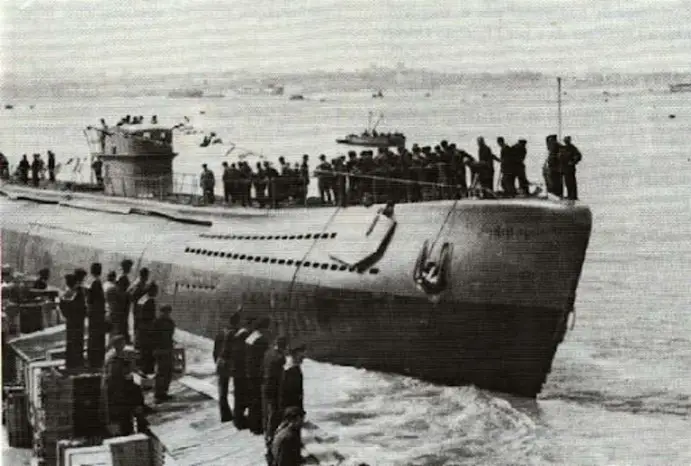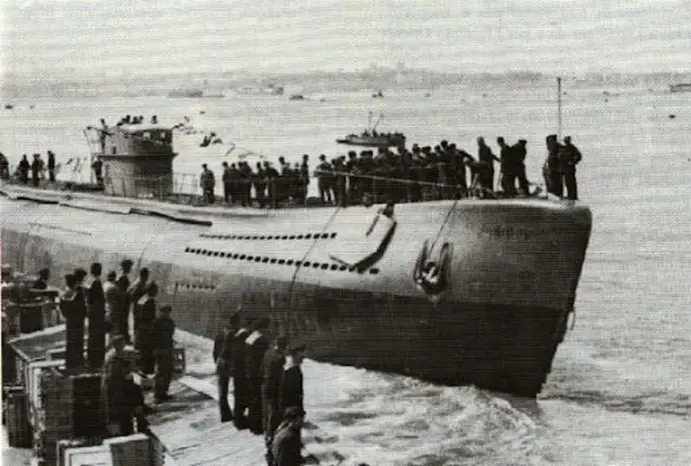Context
In 1941, the Regia Marina tested the transport of supplies to North Africa by utilizing some of its larger oceanic or mine-laying submarines. These units could carry between 50, and 150 tons of materials, depending on the adaptation and space available and granted a safer voyage towards their destinations. These early experiences led to the study of new submarines, specifically designed for transport duties.
In 1942, the lack of limited availability in Europe of strategic materials like natural rubber, tin, and zinc, led the Germans and Italians to organize secret underwater transport missions to the far east to retrieve such materials from the Japanese. The submarines chosen for this task were the surviving Italian submarines operating in the BETASOM base in Bordeaux. Their age and deterioration meant that they could no more fit in combat roles, thus they underwent several modifications to increase their cargo capacity, up to a maximum of 200 tons per unit.
The axis needs were superior to the cargo capacity of the BETASOM submarines, thus the Regia Marna commissioned the construction of 2 new large submarines of the “R” class, from the design project started in 1941. These units were laid down in summer 1942 in the shipyard of Taranto, and were given the names “Romolo” and “Remo”. The Germans became very interested in these new units and provided the Italians the materials to laid down other 10 units in early 1943.
The design
The submarines of the “R” class were the largest underwater units ever built for the Italian Navy, 87 meters long and displacing 2.600 tons, submerged, and 2.200 tons, surfaced. They did not possess any torpedo tubes and their armament consisted only of three AA machine guns.
For the transport of materials, the “R” class was equipped with four watertight cargo holds, two forward and two aft, for a total capacity of 610 cubic meters; this made them capable of carrying 600 tons of materials. Their capacity was three times what the largest Betasom “converted” submarines could carry and double the cargo that could be loaded on German submarines type XB long-range minelayers).
The cargo holds could resist up to the testing depth (100 meters). For the loading and unloading of goods, there were also, on the main deck, four small folding loading cranes, one for each hold.
The engine apparatus relied on two diesel engines with a power of 2600 HP for surface navigation, and two electric engines with a power of 900 HP for underwater navigation. They granted a maximum surface speed of 14 knots and an underwater speed of 6,5. Being designed for long oceanic voyages, their autonomy was considerable: 12,000 miles at 9 knots while surfaced and 110 miles at 3.5 knots underwater.

Launch of the Romolo
Romolo and Remo
Only the first two units of the class were completed, they were launched in March 1943 and became operative in June after hasty preparations and training of the crew. In summer 1943, the situation for the Axis was dire and Italy faced the imminent threat of an allied invasion. The Regia Marina sought to use the Romolo and Remo to transport strategic minerals, like copper and lead, from Sardinia (where the mines were located) to mainland Italy. The increasing Allied air and naval dominance over the Mediterranean led the Navy leadership to think that only the R class transport submarines could maintain such traffic open. This was the reason for which the Regia Marina declined the request of the Kriegsmarine to deploy the Romolo and Remo in the Atlantic for voyages directed in the far east. In addition, the crossing of the Gibraltar strait had become much more dangerous, and the two large submarines would have hardly passed unnoticed.
On the 15th July 1943, Romolo and Remo departed from Taranto for their first, and last, mission. They had to reach Naples and then Sardinia to load minerals and materials needed by the industries in the north. Few hours after their departure, the Remo was sighted by the British submarine HMS United and torpedoed. The submarine went down with 55 men and only 4 survived. The Romolo continued its journey, but radio contact was lost on the 18th, leaving no trace of the submarine that was subsequently declared lost.
After the war, allied files revealed that the submarine came under attack by a British aircraft that hit the Romolo with a bomb. However, the damage received did not sink the submarine which changed course and continued to sail for some hours, observed from distance by the British aircraft before breaking contact. The most likely explanation is that Romolo sunk due to an internal explosion, directly or indirectly caused by the bomb damage; there were no survivors.

Launch of the Romolo
Sources
Colombo, L. (2018). Sommergibile Romolo. Tratto da Con la pelle appesa a un chiodo : http://conlapelleappesaaunchiodo.blogspot.com/2018/01/romolo.html
Erminio Bagnasco, M. B. (2014). I sommergibili italiani 1940-1943, Parte 2° – Oceani.
Giorgerini, G. (1994). Uomini sul fondo.